
Cloud Physics Observatories
Munnar Observatory
The high altitude cloud physics observatory is located at Rajamallay (10.15° N, 77.02° E), near Munnar, Kerala at an altitude of 1820 m above MSL, 5 km away from Anamudi (2695 m), which is the highest Peak in Western Ghats. Efforts are being made to upgrade the station to international standards for carrying out frontline studies in atmospheric processes over the Western Ghats. "Observational and modeling studies of cloud processes, tropical rainfall, vertical thermodynamic structure of monsoon clouds and deep convective systems in improving the cloudiness parameterizations and precipitation regimes over the complex terrain of Western Ghats region” are envisaged under the program.
Breamore Observatory
Braemore is a mid-altitude observatory (8.75°N, 77.08°E) in Thiruvananthapuram district, Kerala. The observatory is at an altitude of about 400 m above MSL located at a distance of about 40 km from the NCESS observatory. Braemore is situated on the western slope of the Western Ghats, where the orographic lifting and thunder cloud formation exists. The Braemore observatory was initially established in 2009. Previous studies indicated that the lightning incidences are more in the midlands, while less frequent on mountain crests and coastal region. Also, reported lightning incidences are far less to the west of Palakkad Gap, area devoid of mountains.
In order to understand convective thundercloud formation and the associated lightning phenomena, the NCESS established an observatory on the western slope of the Western Ghats at Braemore, adjoining the Ponmudi Hills near Trivandrum. Measurements from the observatory have shown that Western Ghat mountain slope leads to thundercloud formation. The results also indicate that the existence of strong updrafts followed by the formation of thunderclouds provide an ideal situation to study the Cb formation and electrical characteristics of lightning discharges. More studies are being planned to understand the convective thundercloud formation and the lightning associated with it.
NCESS Campus Observatory
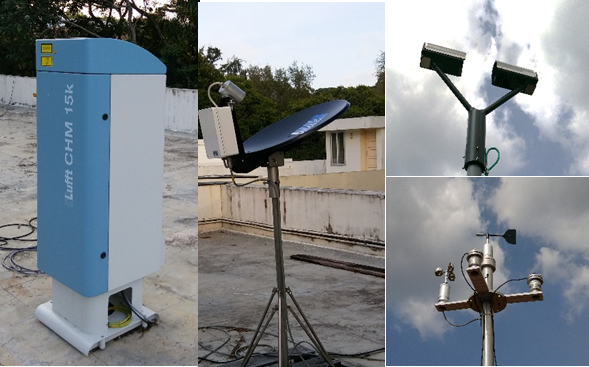 The National Centre for Earth Science Studies (NCESS) campus, Thiruvananthapuram (8.29°N, 76.59°E, 20 m aboveMSL, Kerala is near to the Akkulam back water system, about 3 Km away from the coast of Arabian Sea and 9.5 Km away from city centre.
The National Centre for Earth Science Studies (NCESS) campus, Thiruvananthapuram (8.29°N, 76.59°E, 20 m aboveMSL, Kerala is near to the Akkulam back water system, about 3 Km away from the coast of Arabian Sea and 9.5 Km away from city centre.
Instruments
Automatic Weather Station
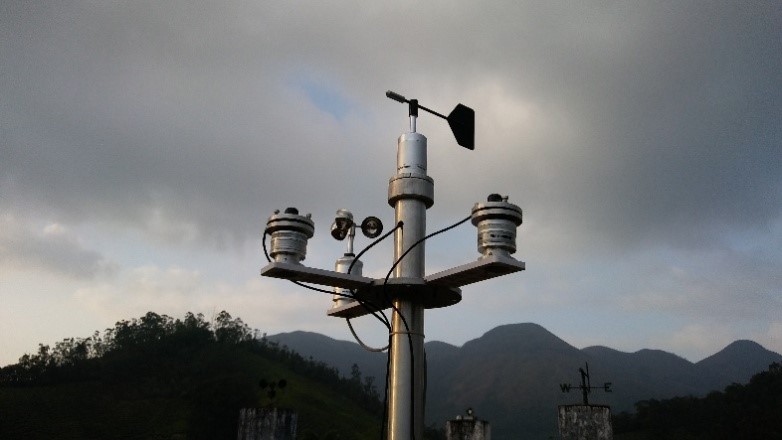 The automatic weather station installed at NCESS, Braemore and Rajamallay measures the temperature, relative humidity, air pressure, rainfall, solar radiation, UV radiation, wind speed and direction. Sampling rate of the observation is for every minute.
The automatic weather station installed at NCESS, Braemore and Rajamallay measures the temperature, relative humidity, air pressure, rainfall, solar radiation, UV radiation, wind speed and direction. Sampling rate of the observation is for every minute.
Ceilometer
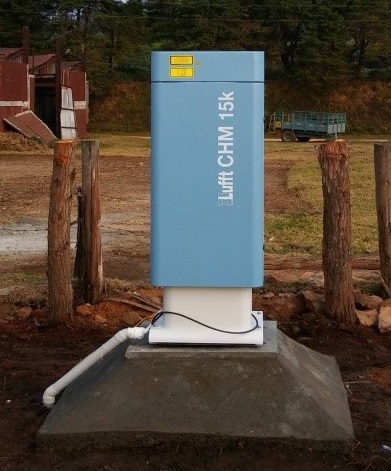 Ceilometer is an optical backscatter Lidar (Wavelength; 1064 nm) to measure aerosol height profiles. They determine cloud base heights, penetration depths, mixing layer height and vertical visibility.
Ceilometer is an optical backscatter Lidar (Wavelength; 1064 nm) to measure aerosol height profiles. They determine cloud base heights, penetration depths, mixing layer height and vertical visibility.
The operating range is up to 15 kilometers (50,000 feet) and reliably detects multiple cloud layers and cirrus clouds.
The ceilometer is installed at NCESS and Munnar.
Measuring range: 5 m - 15 km (15 – 50,000 ft)
Range Resolution: 5 m (16 ft) measurement : 15 m (full range resolution in NetCDF file) : 5 m (5 m - 150 m near field range resolution in NetCDF file)
Parsivel Disdrometer
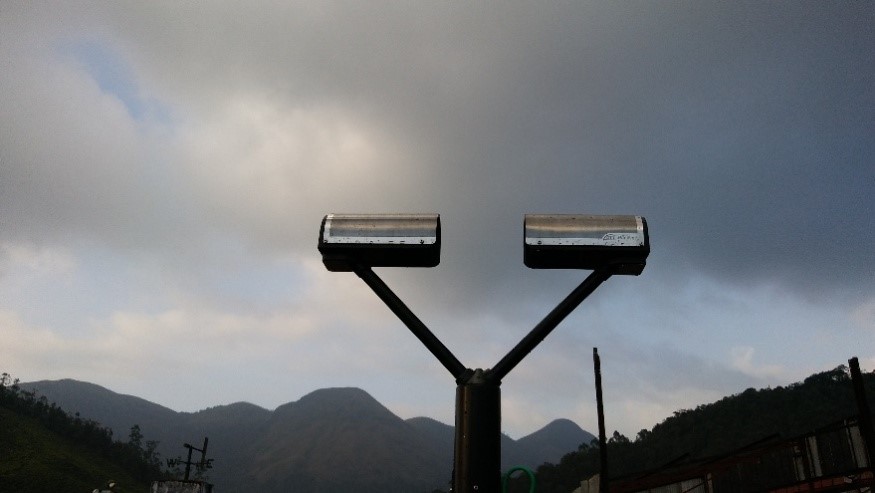 Parsivel disdrometer is a laser-based optical system to capture both the size and speed of falling particles. The size range of measurable liquid precipitation particles is from 0.2 to 5 mm, for solid precipitation particles from 0.2 to 25 mm. The equipment detects and identifies 8 different precipitation types as drizzle, mixed drizzle/rain, rain, mixed rain/snow, snow, snow grains, freezing rain and hail.
Parsivel disdrometer is a laser-based optical system to capture both the size and speed of falling particles. The size range of measurable liquid precipitation particles is from 0.2 to 5 mm, for solid precipitation particles from 0.2 to 25 mm. The equipment detects and identifies 8 different precipitation types as drizzle, mixed drizzle/rain, rain, mixed rain/snow, snow, snow grains, freezing rain and hail.
Number of size and velocity bins : 32 x 32 matrix
Drop size range : 0.06-24.5 mm
Velocity range : 0.05-20.8 m/sec
Micro Rain Radar (MRR)
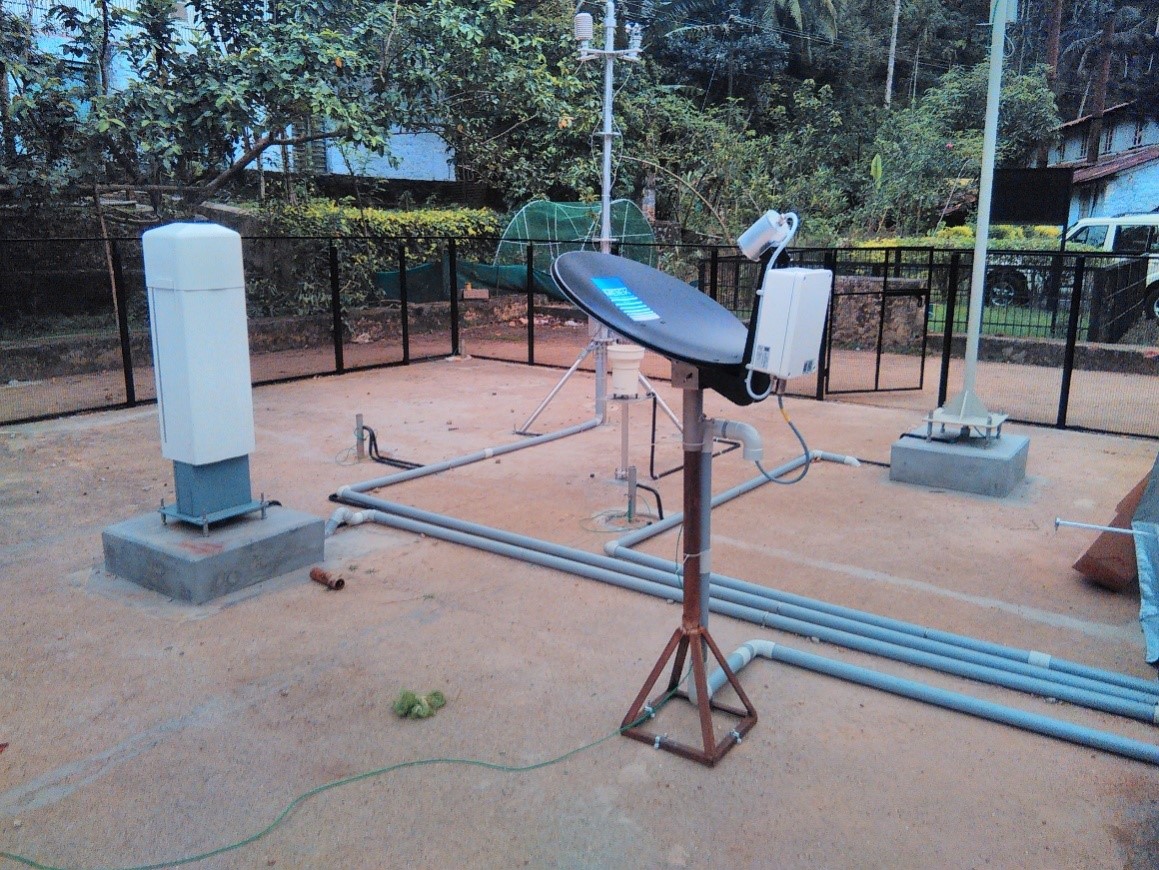 The Micro Rain Radar (MRR) is a vertical pointing microwave profiler (24 GHz) for the measurement of rain rate, liquid water content and drop size distribution from near ground to several hundred metres. MRR has been installed at NCESS campus, Braemore and Munnar.
The Micro Rain Radar (MRR) is a vertical pointing microwave profiler (24 GHz) for the measurement of rain rate, liquid water content and drop size distribution from near ground to several hundred metres. MRR has been installed at NCESS campus, Braemore and Munnar.
Frequency - 24.23 GHz
Beam Width - 1.5°
Averaging Interval - 10 - 3600s
Height Resolution - 10 - 200m
Number of Range Gates - 30




 RTI Act
RTI Act